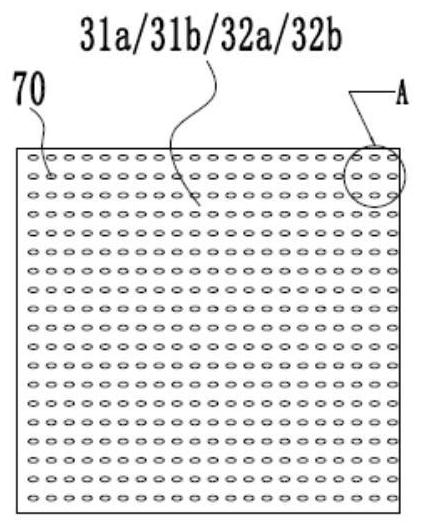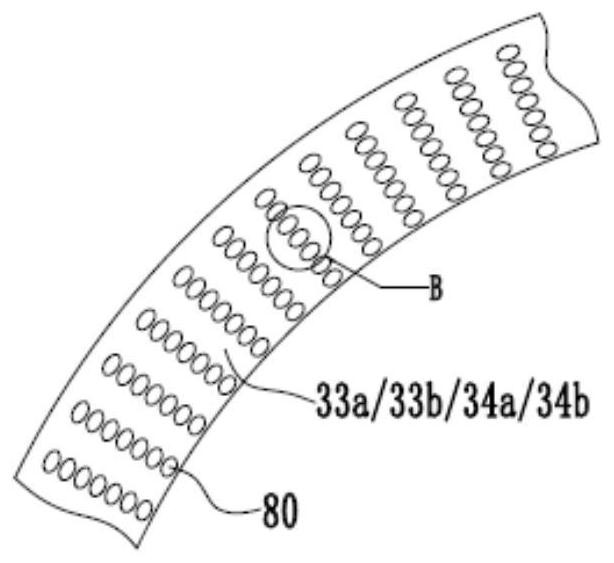Graphene enhanced aluminum -based materials, its preparation methods, aluminum alloy parts and compressors
A technology of strengthening aluminum base and graphene, which is applied in the field of aluminum alloy materials, can solve the problems of insufficient self-lubricating properties of Oldham slip ring materials, and achieve the effects of alleviating fracture, improving strength and wear resistance, and enhancing impact strength
- Summary
- Abstract
- Description
- Claims
- Application Information
AI Technical Summary
Problems solved by technology
Method used
Image
Examples
preparation example Construction
[0051] In a typical implementation of the present application, a method for preparing a graphene-reinforced aluminum-based material is provided, the preparation method comprising: Step S1, providing modified graphene, the modified graphene includes a graphene body and an attached The modified material on the main surface of graphene, the modified material is TiC, B 4 One or more of C, WC, ZrC and SiC; step S2, mixing the matrix raw material, reinforcing agent and modified graphene and performing molding treatment to obtain a graphene-reinforced aluminum-based material, the reinforcing agent is selected from Cu, Mg , one or more alloys of Zn, or carbon nanotubes.
[0052] This application uses titanium, boron, tungsten, zirconium, and silicon as modifiers to form TiC, B in modified graphene 4 C, WC, ZrC or SiC, TiC, B 4 C, WC, ZrC or SiC can be used as the strengthening phase and wear-resistant phase to improve the strength and wear resistance of the aluminum substrate; in ad...
Embodiment 1
[0085] according to Figure 14 The shown process makes graphene-reinforced aluminum matrix composites, specifically:
[0086] First add the redox graphene to the ethanol solution, and use an ultrasonic wave with a power of 2Kw to disperse it for 30 minutes, then add Si powder to the above redox graphene-ethanol dispersion that has been ultrasonically dispersed, and then Use ultrasonic waves to disperse it for 60 minutes to obtain the first primary mixture. The average particle size of redox graphene is 15 μm, and the average particle size of Si powder is 30 μm; the mass ratio of Si powder to graphene is 0.4:1.
[0087] The above-mentioned first primary mixture was mixed by low-temperature ball milling. The protective medium introduced during the low-temperature ball-milling mixing process was liquid nitrogen. The speed of low-temperature ball-milling mixing was 300 r / min, and the ball-milling time was 3 hours to obtain the first mixture.
[0088] The first mixture obtained ab...
Embodiment 2
[0096] The difference with embodiment 1 is:
[0097] Add the modified graphene-Al mixture powder, Cu powder and Ti powder into the molten aluminum liquid, and stir to obtain a mixed solution, wherein the mass percentage of the modified graphene-Al mixture powder is 10%, and the mass percentage of the Cu powder The mass percentage is 2%, the mass percentage of Ti powder is 3%, and the mass percentage of aluminum liquid is 85%. The average particle diameter of the Cu powder was 30 μm, and the average particle diameter of the Ti powder was 40 μm.
PUM
| Property | Measurement | Unit |
|---|---|---|
| particle size | aaaaa | aaaaa |
| particle diameter | aaaaa | aaaaa |
| particle diameter | aaaaa | aaaaa |
Abstract
Description
Claims
Application Information
 Login to View More
Login to View More - R&D
- Intellectual Property
- Life Sciences
- Materials
- Tech Scout
- Unparalleled Data Quality
- Higher Quality Content
- 60% Fewer Hallucinations
Browse by: Latest US Patents, China's latest patents, Technical Efficacy Thesaurus, Application Domain, Technology Topic, Popular Technical Reports.
© 2025 PatSnap. All rights reserved.Legal|Privacy policy|Modern Slavery Act Transparency Statement|Sitemap|About US| Contact US: help@patsnap.com



